INTRODUCTION
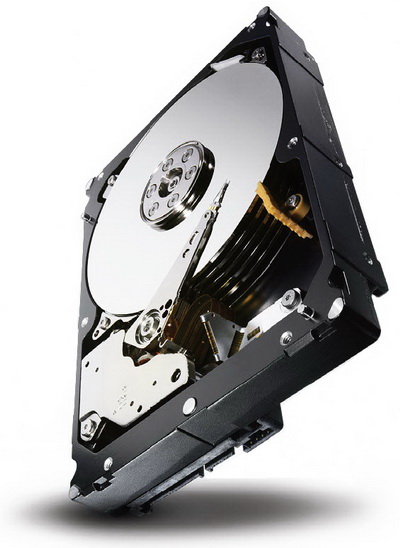
If we exclude the unfortunate floods that took place in Thailand roughly a year ago (and forced several factories to cease HDD manufacturing and shipping) HDD prices normally get serious cuts each day that goes by (as do SSD prices) and so currently even the highest capacity 4TB models retail at such prices that can be easily purchased by casual users and gamers around the world. That however mostly stands with entry level models that offer exactly what most users want and that's a good price to capacity ratio without however sacrificing performance. On the other hand however professionals and enterprise users want the best money can buy not only in terms of performance and capacity but also in terms of durability under extreme conditions and that's where enterprise class HDDs like the latest Seagate Enterprise Capacity 3.5 V.3 (former Constellation ES.3) 4TB SATA III come in.
Founded in 1979, Seagate is the leading provider of hard drives and storage solutions. From the videos, music and documents we share with friends and family on social networks, to servers that form the backbone of enterprise data centers and cloud-based computing, to desktop and notebook computers that fuel our personal productivity, Seagate products help more people store, share and protect their valuable digital content. Seagate offers the industry’s broadest portfolio of hard disk drives, solid-state drives and solid-state hybrid drives. In addition, the company offers an extensive line of retail storage products for consumers and small businesses, along with data-recovery services for any brand of hard drive and digital media type. Seagate employs more than 50,000 people around the world.
The Enterprise Capacity 3.5 V.3 line of HDDs is the successor of the award winning Constellation ES.2 line launched by Seagate roughly a year ago (and the Constellation ES before that) so i was a bit surprised when i got word that Seagate changed the name from Constellation ES.3 (as was expected and even printed on the HDD stickers of the first batch to leave the factory) to Enterprise Capacity 3.5 V.3. Names are really not important as specifications however and so the latest Enterprise Capacity 3.5 V.3 spins at 7200RPM, has a total of 128MB Cache and comes with several features such as Seagate’s PowerChoice technology (offers reduced power consumption up to 54%), enhanced error correction, super-parity, ramp load technology (moves the read/write heads/sliders from an small ramp placed inside the drive and onto the surface of the disks only when the optimal rotational speed has been achieved), enhanced rotational vibration tolerance (vibration reduction) and a humidity sensor (controls the vertical position of the sliders) for optimum performance. However although specs-wise the new Constellation ES.3 (for short) looks amazing it's the 175MB/s sustained transfer rate that Seagate claims it can deliver that steal the show especially for people who are after the very best in terms of performance. Well the time has come to see if these claims are true.
SPECIFICATIONS AND FEATURES


THE ENTERPRISE CAPACITY 3.5 V.3 4TB
As usual we received two units of the latest Enterprise Capacity 3.5 V.3 drive (for single/RAID0 tests) in bulk form.
The Enterprise Capacity 3.5 V.3 (AKA Constellation ES.3) is a 3.5 inch hard disk drive but that aside it looks the same like the ES.2 model.
The large sticker at the top of the drive includes information such as the Seagate logo, drive model (Constellation ES.3 prior to the renaming), coded date of manufacture (28/11/12), serial number, product number, barcodes, firmware version, connectivity, electrical requirements and last but not least several certification and warning logos.
On both sides we see the standard mounting holes found on every 3.5" drive out there.
Once again Seagate has used a green PCB at the rear with all of the components on the interior.
At the rear of the drive we see the usual SATA III data and power connectors along with 4 small pins next to them (probably for firmware updates).
TEST BED
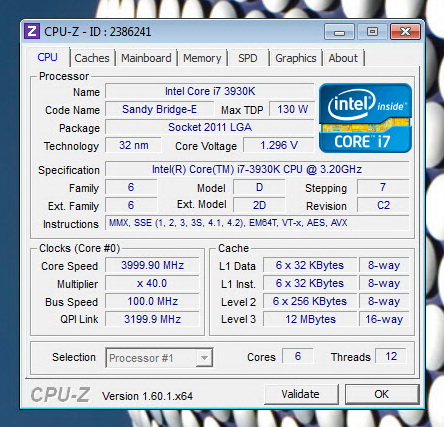

TESTING METHODOLOGY
Thoroughly testing hard disk drives may require time and patience but that's just about it. Of course that doesn't mean that one must take it lightly, at least not when people base their decision on your results. True many choose to only use 2 or 3 benchmarking suits in order to measure the performance of a drive or drives since quite honestly most benchmarking suites do tend to agree with each other (so it's not really wrong) but we always like to take things a step further not because we have to but because we want to be almost 100% certain of the results we get and post in our charts (one can never be 100% certain about anything).
So in this kind of reviews we will use a total of 6 different benchmarking suites in an effort to bring you the most accurate results across the board. Now the only reason why i say effort is because real-world usage is not always on par with what results one gets by running several benchmarks on a drive and that's mainly because there are many variables at work from ambient temperatures to hardware configurations and even firmware versions. The benchmarking applications we use are the AIDA64 suite (former Everest Pro), HD Tune Professional, HD Tach RW, ATTO, Sisoftware Sandra Pro and the Crystal Disk Mark 64bit. These benchmarking tools are the best in what they do and as you will also see later on their results more or less agree. Each test is performed a total of 6 times and then the average is recorded into the charts. Temperatures are recorded using Hard Disk Sentinel and after 45 minutes of continuous testing in a 23 degrees Celsius temperature controlled room. Finally we also use an ExTech HD600 dBA meter on each of the drives (5cm away) in order to accurately record their noise levels, although if you don't turn off all system fans when doing so it's quite possible that you will never even hear the drive. The operating system as usual is a fresh installation of Microsoft Windows 7 Ultimate Service Pack 1 with every update installed up until the 8th of February 2013.
Since there are many people out there (mostly professionals and enterprise users) who have asked if it's possible to include RAID 0 tests with our hard disk drive reviews we decided to do so and so this will always be the case (providing of course we get more than a single drive) with all the available drives we have in our disposal. All RAID 0 tests are performed on the LSI MegaRAID 9265-8i SAS/SATA III 6Gb/s card and with different configurations in both ATTO and Crystal Disk Mark since with normal single drive settings the results are far from accurate.
TEST RESULTS - AIDA64 / ATTO
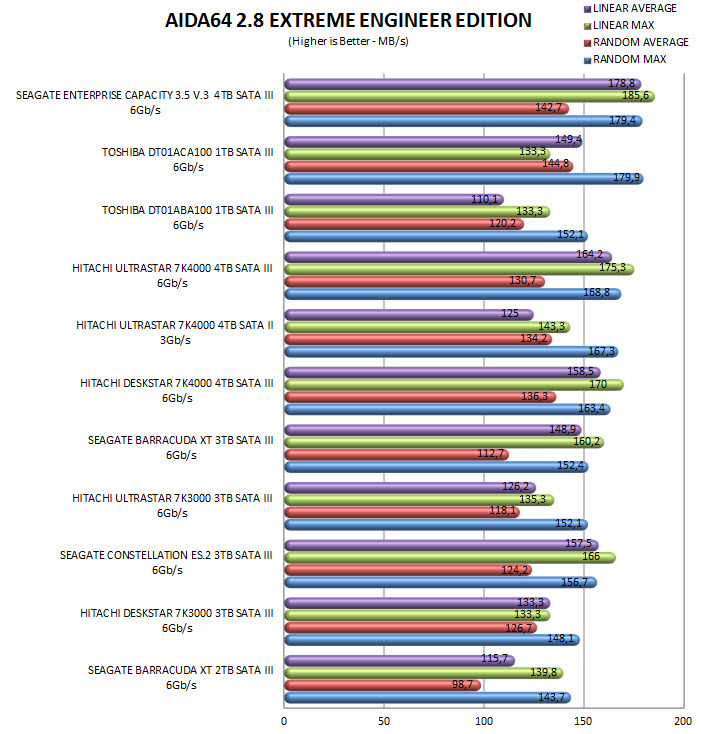
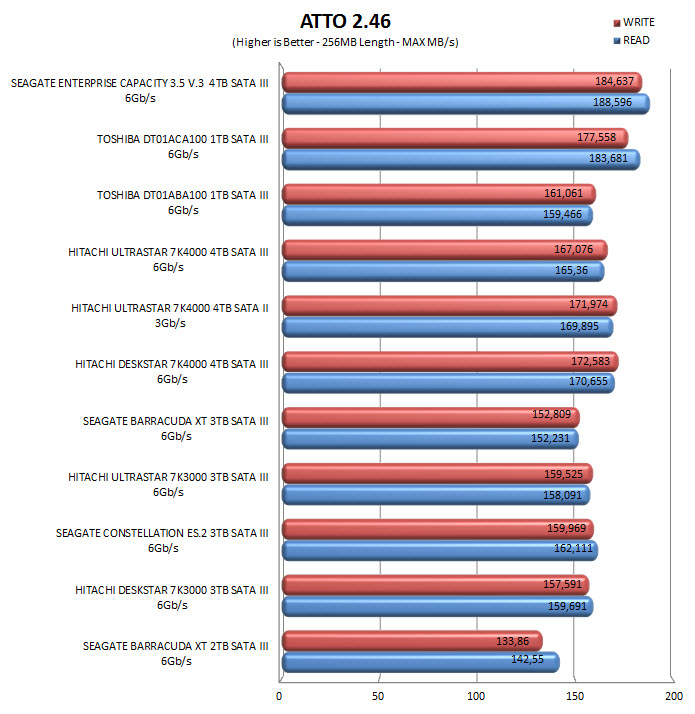
TEST RESULTS - HD TACH RW / HD TUNE PRO
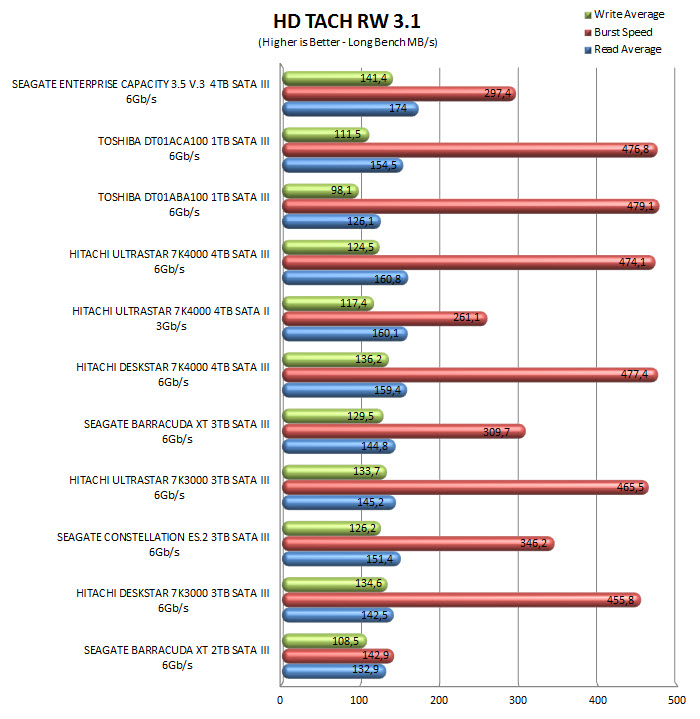

TEST RESULTS - SISOFTWARE SANDRA PRO / CRYSTAL DISK MARK
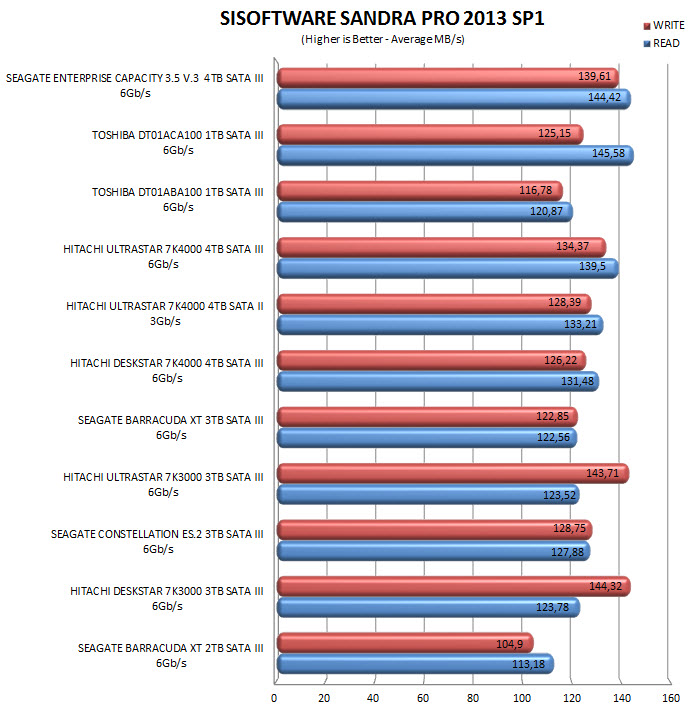

TEST RESULTS - TEMPERATURES / NOISE LEVELS


TEST RESULTS - RAID0 PART 1
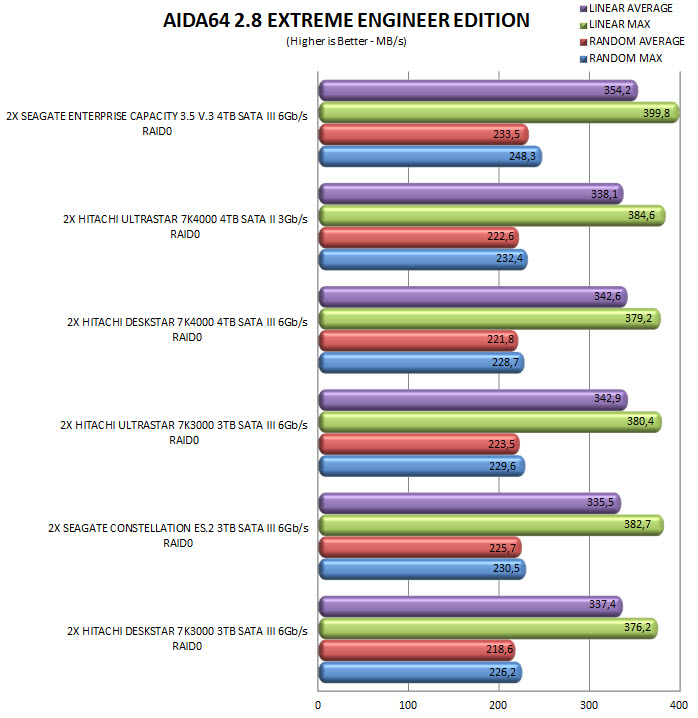
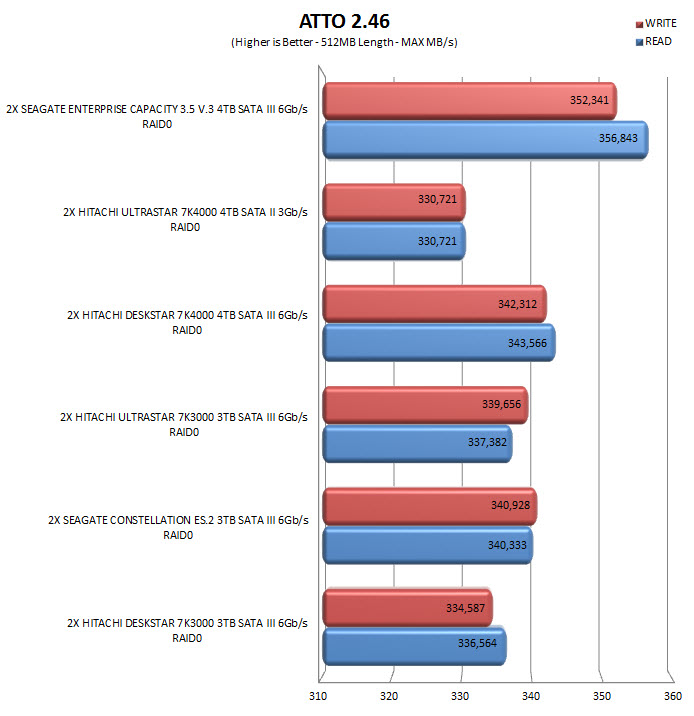
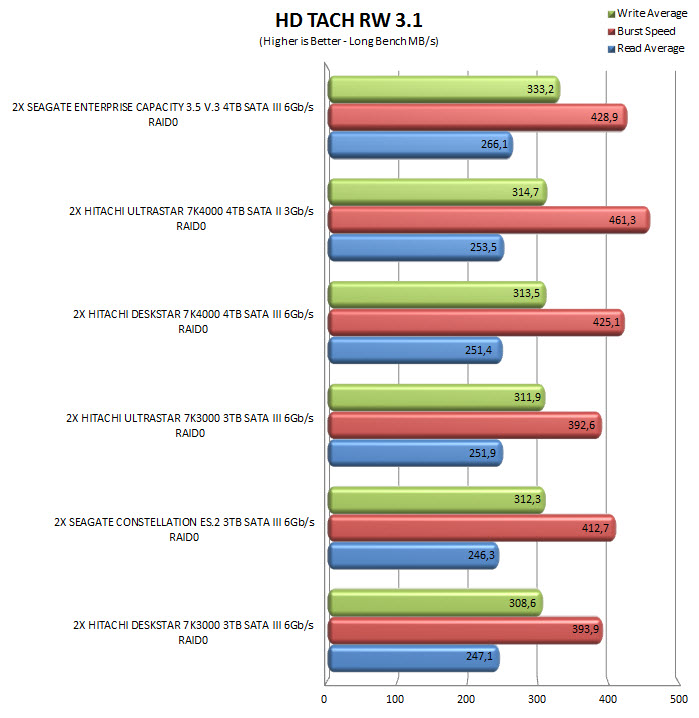
TEST RESULTS - RAID0 PART 2

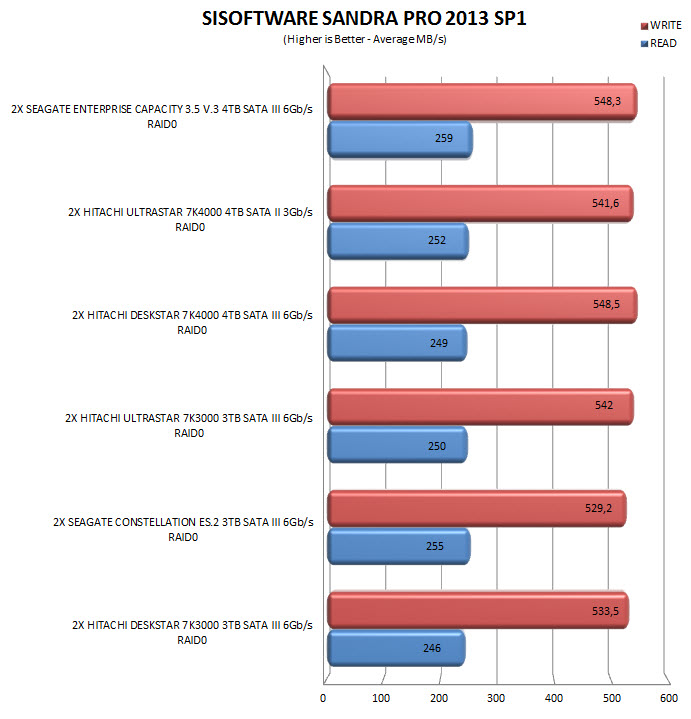
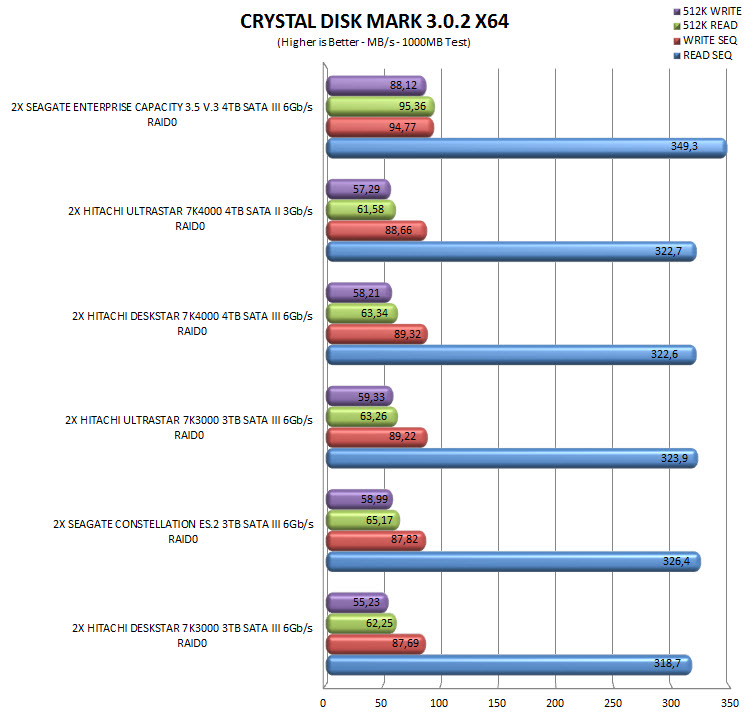
(Crystal Disk Mark has never been good with our RAID 0 setups, perhaps because of the MegaRAID card)
CONCLUSION
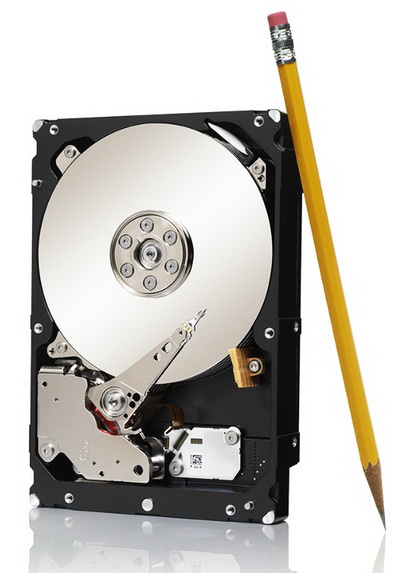
Seagate lost the performance crown to HGST when they released their latest 7K4000 Ultrastar models but they made a strong come back (stronger than i had expected initially) with their latest Enterprise Capacity 3.5 V.3 (ES.3) drives since these are the fastest 7200RPM SATA III mechanical disk drives we've seen to date and according to our results the 175MB/s sustained speed claim by Seagate was not off. Naturally the more "optimized" SAS variants should easily outperform the SATA III ones (and we just begun testing on those as well) but Seagate doesn't really need to wait until we get those results in not when they already have the fastest enterprise class SATA III compatible HDD around. Honestly no matter how hard we try to think of something in the end there's nothing bad we can say about the Enterprise Capacity 3.5 V.3 4TB SATA III drives (aside that we prefer the Constellation ES.3 name a lot better) and so unless they start breaking down a lot faster than they should (reliable durability tests for an enterprise class HDD would take months to complete) these are the perfect choice for professionals and enterprise users alike.
Price is perhaps the only downside one can find with enterprise class products such as the Enterprise Capacity 3.5 V.3 4TB SATA III hard disk drives by Seagate but since their target audience is neither casual users nor gamers i don't really think that's really a problem. So currently the Enterprise Capacity 3.5 V.3 4TB SATA III model (ST4000NM0033) retails for USD399.99 inside the USA (Amazon) and at around 360Euros inside the EU a price tag which is actually not as high as i was expecting it to be since it's roughly the same as that of the Constellation ES.2 3TB SATA III model on launch just a year ago. Well that's all folks, if you want the best SATA III compatible HDD in the market today you can't do better than the Enterprise Capacity 3.5 V.3 4TB SATA III and although i am very curious to see as to how the SAS models perform that doesn't mean we can deny giving our Platinum award away to the SATA III variant.

PROS
- Enterprise Class Quality
- 1.4 Million Hours MTBF (Mean Time Between Failures)
- Top Performance
- 4TB's Capacity
- Power Choice Technology
- Temperatures/Noise Levels
- 5 Years Warranty
CONS
- Price (For Some)

 O-Sense
O-Sense





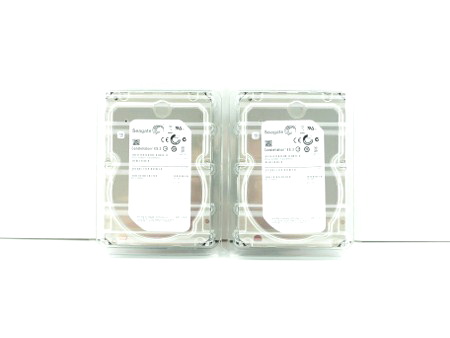
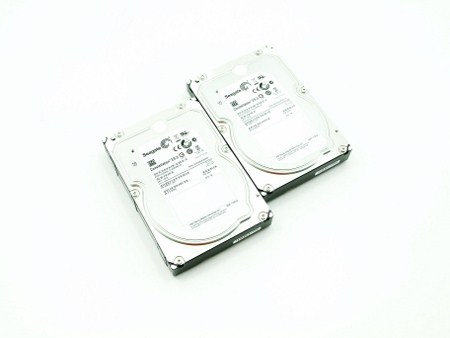

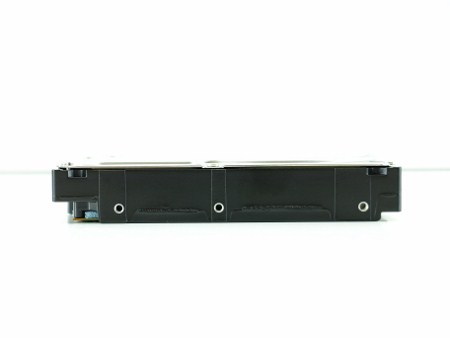
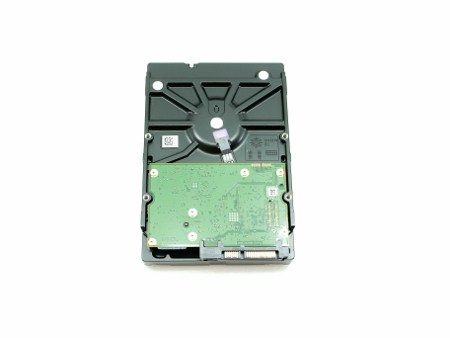
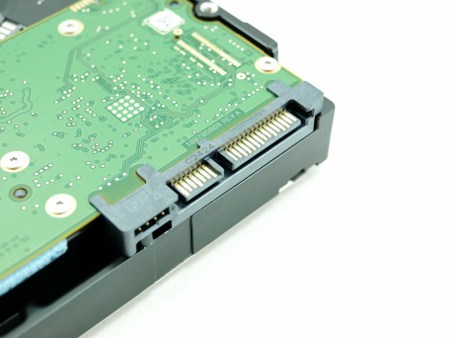


.png)

